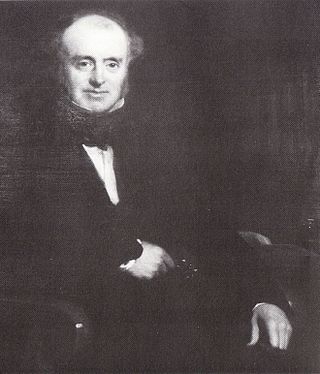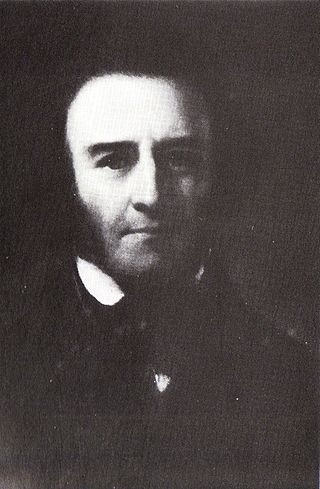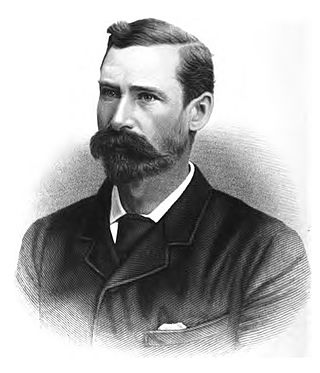Related Research Articles

James Walker was an influential British civil engineer and contractor.

James Meadows Rendel FRS was a British civil engineer.
The Leeds and Selby Railway was an early British railway company and first mainline railway within Yorkshire. It was opened in 1834.

The Hull and Selby Railway is a railway line between Kingston upon Hull and Selby in the United Kingdom which was authorised by an act of 1836 and opened in 1840. As built the line connected with the Leeds and Selby Railway at Selby, with a Hull terminus adjacent to the Humber Dock.

The Port of Hull is a port at the confluence of the River Hull and the Humber Estuary in Kingston upon Hull, in the East Riding of Yorkshire, England.

Thomas Elliot Harrison was a British engineer. Born in Fulham, London, he was raised in the north east of England, where his father was a promoter of early railway companies; after an apprenticeship under William Chapman; he gained engineering experience on the lines his father had helped establish, as well as in working in association with George Stephenson and Robert Stephenson during his early career.

John Braithwaite, the younger, was an English engineer who invented the first steam fire engine. He also co-designed the first locomotive claimed to have covered a mile in less than a minute.

James Abernethy FRSE MICE was a Scottish civil engineer.
John and Benjamin Green were a father and son who worked in partnership as architects in North East England during the early nineteenth century. John, the father was a civil engineer as well as an architect. Although they did carry out some commissions separately, they were given joint credit for many of their projects, and it is difficult to attribute much of their work to a single individual. In general, John Green worked on civil engineering projects, such as road and rail bridges, whereas Benjamin worked on projects that were more purely architectural. Their work was predominantly church and railway architecture, with a sprinkling of public buildings that includes their masterpiece, Newcastle's Theatre Royal.

The Telford Medal is a prize awarded by the British Institution of Civil Engineers (ICE) for a paper or series of papers. It was introduced in 1835 following a bequest made by Thomas Telford, the ICE's first president. It can be awarded in gold, silver or bronze; the Telford Gold Medal is the highest award the institution can bestow.

John Clarke Hawkshaw was a British civil engineer.

Henry Robinson Palmer (1795–1844) was a British civil engineer who designed the world's second monorail and the first elevated railway. He is also credited as the inventor of corrugated metal roofing, still one of the world's major building materials.

William Chapman (1749–1832) was an English engineer. Born in Whitby, he worked on the construction of the Old and Humber Docks in Hull, as well as many drainage and canal projects. He is credited with the invention of the bogie and articulation for rail vehicles.
John Gibb (1776–1850) was a Scottish civil engineer and contractor whose work included the construction of harbours, bridges, roads, lighthouses, and railways in the United Kingdom, primarily in Scotland. He was a close associate of Thomas Telford, who employed him on many of his civil engineering projects during the first half of the 19th century.
Francis Whishaw was an English civil engineer. He was known for his role in the Society of Arts, and as a writer on railways. Later in life he was a promoter of telegraph companies.

Charles Manby, FRS FRSA was Secretary of the Institution of Civil Engineers from November 1839 to 1856, and engineer of the first iron steamer to cross the English Channel. Fluent in French, he installed gas piping into Paris and advised on the construction of the Suez Canal.
James Oldham was a British civil engineer, involved in the reclamation of Sunk Island in the East Riding of Yorkshire, as well as a number of dock and other civil engineering schemes in and around Kingston upon Hull.

John Towlerton Leather (1804–1885) was a British civil engineering contractor.
John Bernard Hartley (1814–1869) was a British civil engineer, son of Jesse Hartley the Liverpool docks engineer. He was engineer on the Hull Railway Dock, and Victoria Dock, and other works, and was instrumental in promoting the Birkenhead Docks on the Mersey.

Michael Lane was a British civil engineer who served as the Chief Engineer of the Great Western Railway (GWR). A protégé of Isambard Kingdom Brunel, he worked with both Brunel and Brunel's father Marc on various projects before joining the younger Brunel on the GWR. He eventually succeeded that Brunel as the railway's Chief Engineer, serving in the position for nearly eight years before his death.
References
- 1 2 Skempton, A.W.; Chrimes, M.M.; Cox, R.C.; Cross-Rudkin, P.S.M; Rennison, R.W.; Ruddock, E.C., eds. (2002), A Biographical Dictionary of Civil Engineers in Great Britain and Ireland, vol. 1 (1500-1830), Thomas Telford / The Institution of Civil Engineers, pp. 566, 567, 708, ISBN 0-7277-2939-X
- ↑ "Norwich and Lowestoft Navigation Bill - Minutes of Evidence", Parliamentary Papers, House of Commons and Command, vol. 4, pp. 225–230, 12 May 1826
- ↑ A. W. Skempton, ed. (1977), Early printed reports and maps (1665-1850) in the Library of the Institution of Civil Engineers, Institution of Civil Engineers, p. v, ISBN 9780727700476,
.. The paper on Hull docks in volume 1 of Transactions by John Timperley, for which he received the first Telford Gold Medal, remains one of the finest job descriptions ever written, ..
- ↑ "3 June", The Gentleman's magazine, vol. 162, 1837
- ↑ "Session 1838 - Annual Report", Minutes of proceedings of the Institution of Civil Engineers, vol. 1, Institution of Civil Engineers (Great Britain), 1848 [1837], p. 8
- ↑ Herapath, John, ed. (1838), "The Hull and Selby Railway", The Railway Magazine, 4: 250
- ↑ "Returns Relating to the Isle of Man", Accounts and Papers of the House of Commons, House of Commons, vol. (26) 59, p. 15, 1847
- ↑ Laxton, William (November 1844), "Institute of Civil Engineers", The Civil Engineer and Architect's Journal, vol. 7, p. 444